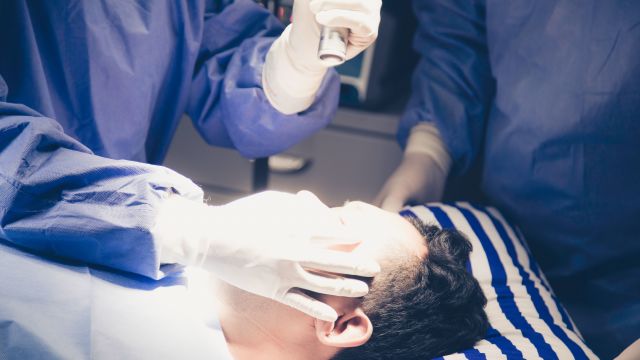Updated on February 27, 2024.
A history of damage to the brain from trauma—such as from blows to the head—has been tied to increased risk for self-harm and suicide. More specifically, research suggests that the rate of completed suicide among those with traumatic brain injury (TBI) is almost double that of people without TBI.
According to the results of a 2018 study published in JAMA, more severe TBI or a need for ongoing medical care related to TBI is linked to a higher increased risk for suicide. Concussions are considered a milder form of TBI, but the study showed that the risk of suicide stemming from milder TBI was also elevated.
What the data show about TBI and suicide
The period of greatest risk for suicide is in the first couple of years after the traumatic brain injury occurs, says first study author Trine Madsen, PhD. In the first six months after the brain injury, the suicide risk is more than tripled, she says. Even seven years after the injury, some increased risk persists.
Madsen notes that the absolute numbers of people with TBI who complete suicide are relatively low. In her research, only 0.62 percent of the 567,823 people who had TBI died by suicide.
The study relied on information from patient databases, known as registries, in Denmark. Madsen, a postdoctoral fellow with the Danish Research Institute for Suicide Prevention, and her colleagues looked at the stored data for more than 7 million people. They evaluated the relationship between death by suicide and how often people received medical attention for TBI from 1977 to 2014. The researchers found that for the 34,529 people who died by suicide during that period, the rate among those with TBI was almost twice that of those who didn’t have TBI.
How TBI and suicide might be related
It’s worth noting that the results from the study show only a calculated relationship between TBI and suicide and don’t prove that one causes the other. That said, the authors have some ideas about how TBI and suicide might be linked.
According to a study by co-author Michael Eriksen Benros, MD, PhD, a researcher at Copenhagen University Hospital, the injury could trigger inflammation in the brain, leading to loss of protective cells and making the brain vulnerable to mental disorders.
Another possible explanation for the association is that the symptoms accompanying TBI—which may include headaches, dizziness, neck pain, and cognitive issues like memory and concentration problems—may be distressing enough to lead to a psychiatric disorder, Dr. Benros said in a statement.
In addition to not showing a direct cause-and-effect relationship between TBI and suicide risk, the study also involved a specific population of people who tend to share similar backgrounds. That opens the question of how the results might be applied (or extrapolate) to people in other parts of the world.
“I expect that it will extrapolate,” says Ramon Diaz-Arrastia, MD, PhD, a neurology professor and director of the Traumatic Brain Injury Clinical Research Center at the University of Pennsylvania. “My concern is that in lower- and middle-income countries with less access to mental health services, the effect may be even worse.”
Another potential difference between the Danish population studied and other groups comes down to culture.
“Scandinavian cultures are relatively high in suicidality,” says Dr. Diaz-Arrastia, who co-authored an editorial in JAMA accompanying the study. But as for the basic finding of a link, he says, “I suspect it will hold up.”
If the findings do hold up, another big question becomes what can be done about them.
Preventing and treating TBI
Diaz-Arrastia doesn’t foresee direct measures arising from the results. But he does say that the study findings emphasize how important it is that patients receive access to mental health services after sustaining TBI. Unfortunately, says Diaz-Arrastia, “access to mental health services in the United States is not good.”
Madsen’s view is a little more optimistic. She says the findings can help highlight the need for more TBI prevention where the risk of head injury is increased. That would include promoting the use of helmets when riding motorcycles and bicycles, wearing hardhats in occupations such as construction, and using protective headgear when engaging in contact sports like football and boxing.
And when a TBI does occur, Madsen advises that healthcare providers inform patients about the higher risk for psychiatric symptoms so they can stay on the alert for suicidal thoughts or behaviors—and seek help for them as quickly as possible.
If you or someone you love is having thoughts of suicide or self-harm, call, text, or chat the 988 Suicide & Crisis Lifeline at 988.







